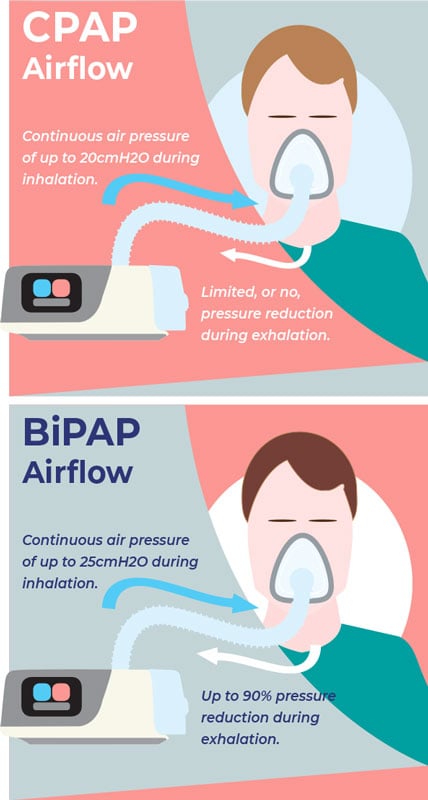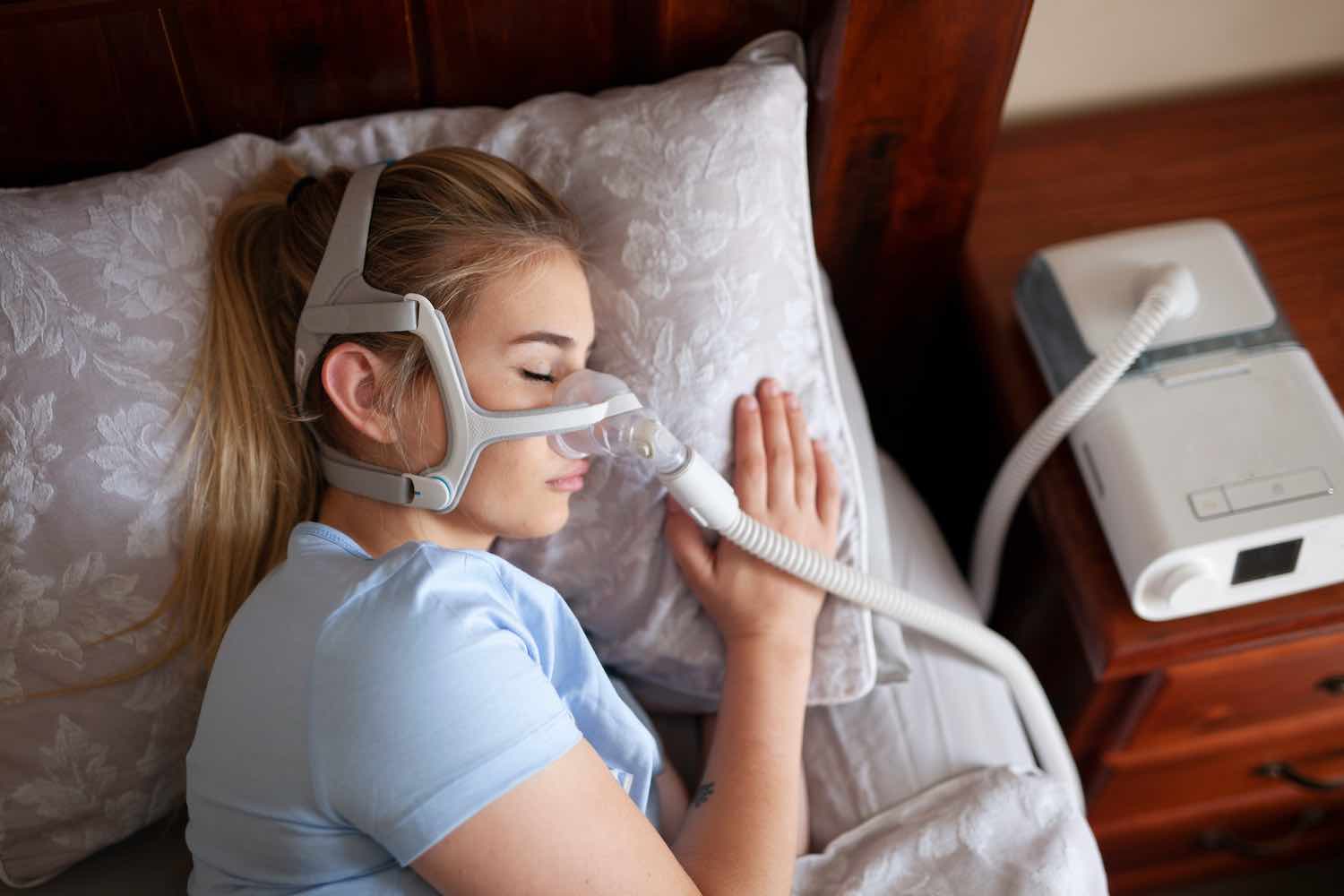BiPAP Rental: Reliable Devices for Comfy Rest
BiPAP Rental: Reliable Devices for Comfy Rest
Blog Article
Bipap vs. CPAP: Which Is the very best for Your Rest Condition?
When navigating the complexities of rest disorders, the choice between BiPAP and CPAP therapy is an essential factor to consider. Each technique supplies special benefits customized to certain conditions, yet the decision depends upon private person demands and comfort levels. While CPAP offers a stable air movement suitable for obstructive rest apnea, BiPAP's dual pressure settings might boost convenience for those with even more detailed respiratory problems. Comprehending these distinctions can significantly affect treatment efficiency, leaving one to consider which option truly straightens with their health demands and way of life.
Recognizing Sleep Disorders
Rest conditions encompass a variety of conditions that interrupt typical rest patterns, influencing both the top quality and duration of remainder. These disorders can materialize in different types, consisting of sleeping disorders, rest apnea, narcolepsy, restless leg disorder, and parasomnias. Each condition offers unique obstacles, often leading to considerable daytime exhaustion, cognitive impairment, and emotional disturbances.
Sleeplessness is characterized by problem falling or remaining asleep, while rest apnea entails repeated interruptions in breathing throughout sleep, frequently leading to fragmented remainder. Narcolepsy, on the various other hand, is marked by extreme daytime drowsiness and unexpected sleep attacks. Troubled leg syndrome creates awkward feelings in the legs, prompting an irrepressible urge to relocate them, which can additionally impede the capability to sleep.
The effect of sleep problems extends past specific health and wellness, affecting overall efficiency, partnerships, and lifestyle. Understanding the specific nature of each problem is critical for effective diagnosis and therapy. As sleep health and wellness comes to be increasingly identified as a crucial part of overall wellness, dealing with these disorders is important for boosting both rest high quality and daily functioning.
How CPAP Works
Constant Favorable Air Passage Stress (CPAP) treatment is regularly employed as a main therapy for obstructive rest apnea (OSA) The system of CPAP involves the use of an equipment that provides a steady stream of air via a mask put on during sleep. This air flow preserves positive pressure in the respiratory tract, protecting against the collapse or obstruction of the throat that can occur throughout sleep.
When an individual takes in, the CPAP device provides a continuous circulation of air, making sure that the airway continues to be open - BiPAP Rental. This not only alleviates the signs and symptoms of OSA, such as snoring and interrupted sleep patterns, but additionally decreases the involved health and wellness dangers, consisting of cardiovascular complications and daytime tiredness
The pressure settings on a CPAP maker can be tailored to meet specific patient needs, usually identified with a sleep study. Generally, CPAP treatment has actually been revealed to considerably enhance the top quality of rest and total wellness for individuals experiencing from obstructive sleep apnea.
Just How BiPAP Functions
BiPAP, or Bilevel Positive Airway Pressure, is a specific type of non-invasive air flow that is specifically beneficial for individuals with conditions such as complicated rest apnea or respiratory disorders. Unlike CPAP, which delivers a continuous stream of air at a solitary pressure, BiPAP provides 2 distinct stress settings: a greater inspiratory stress for breathing and a lower expiratory pressure for exhalation. This dual-pressure technique enables for much easier breathing, lowering the effort needed during exhalation.
The device runs via a mask fitted over the nose or mouth, connected to a machine that generates atmospheric pressure. When the person breathes in, the equipment delivers the higher stress to help with air flow, making certain that the air passage remains open. Upon exhalation, the equipment instantly reduces the stress, making it a lot more comfortable for the individual to breathe out.

Secret Differences In Between BiPAP and CPAP

On the other hand, BiPAP (Bilevel Favorable Air passage Stress) offers two different pressure setups: one for breathing and a lower one for exhalation. This double pressure system enables for even more comfortable breathing, specifically for clients that deal with breathing out versus a continual pressure. BiPAP is frequently suggested for patients with complex sleep apnea, persistent obstructive lung disease (COPD), or those that need additional assistance during sleep.
In addition, the intricacy of BiPAP devices commonly results in a greater price and requires much more careful titration than CPAP. BiPAP Rental. Recognizing these vital differences can aid in identifying which device might be preferable for particular rest conditions, setting the foundation for educated therapy decisions
Picking the Right Therapy
The choice between BiPAP and CPAP treatment click here for more info mainly hinges on the details attributes of the sleep disorder, the person's general health, and their convenience with the device. CPAP, which delivers a continual stream of Recommended Site air, is frequently recommended for obstructive rest apnea (OSA)
Conversely, BiPAP gives 2 levels of stress: one for inhalation and a reduced one for exhalation. This double stress system is valuable for people with intricate sleep apnea or those who experience difficulty breathing out against a continuous stress. Furthermore, BiPAP is typically recommended for people with breathing problems, such as persistent obstructive pulmonary condition (COPD), where varying stress setups can enhance convenience and compliance.
Inevitably, a detailed examination by a sleep professional, including a rest research, can aid determine which therapy straightens best with the client's needs. Aspects such as convenience, ease of usage, and certain clinical conditions need to also be taken into account to enhance therapy end results.
Final Thought
In recap, both BiPAP and CPAP serve distinctive objectives in the administration of sleep problems. CPAP is efficient for obstructive rest apnea through constant air flow, while BiPAP uses twin pressure settings that improve comfort for those with complicated sleep apnea or respiratory system issues. The option between these therapies ought to be directed by private needs and conditions, requiring a thorough analysis by a sleep specialist to make certain optimum therapy end results and boosted high quality of rest.

Overall, CPAP therapy has actually been revealed to significantly enhance the quality of sleep and total wellness for individuals experiencing from obstructive rest apnea.
BiPAP is usually recommended for individuals with intricate rest apnea, persistent obstructive lung disease (COPD), or those who need extra assistance throughout sleep.
CPAP is effective for obstructive sleep apnea with regular air movement, while BiPAP offers double stress settings that improve convenience for those with intricate sleep apnea or look what i found breathing concerns.
Report this page